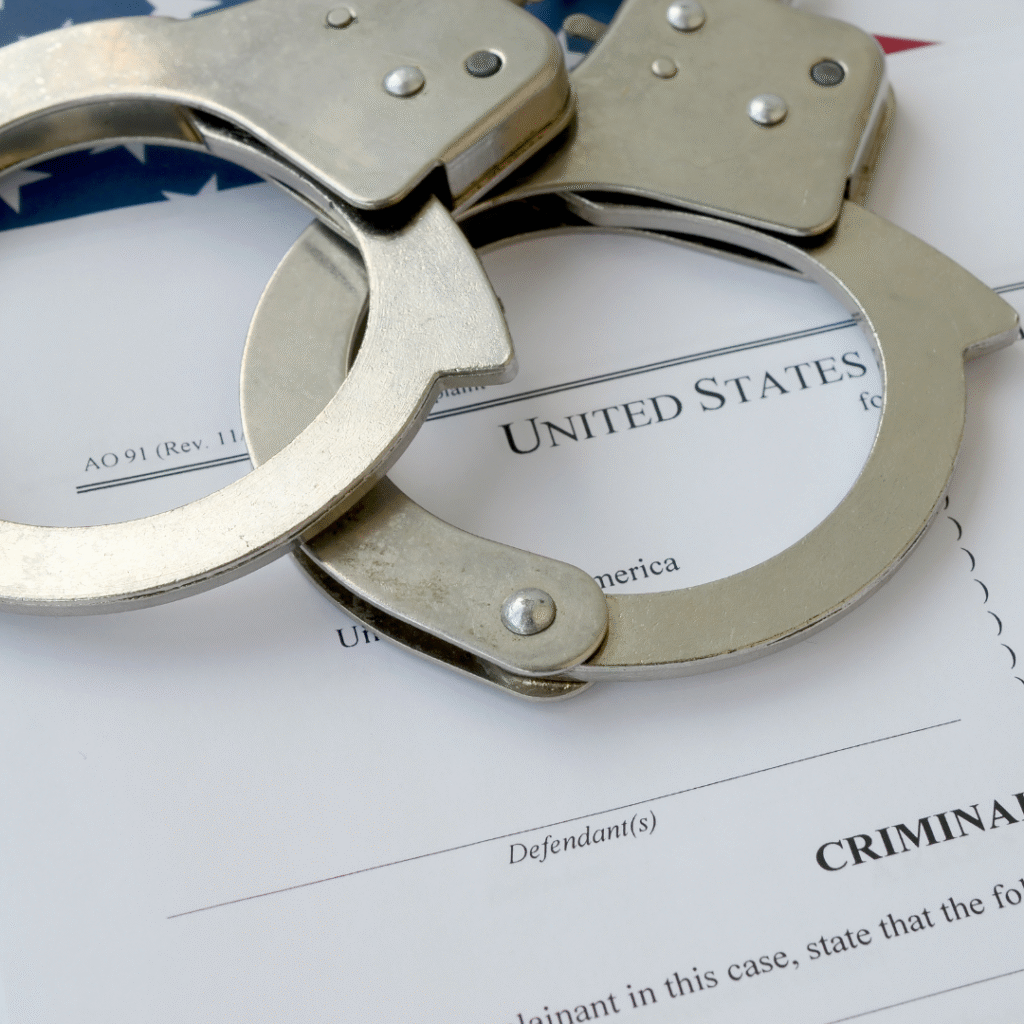Workers’ Compensation Insurance Fraud Case: Oxnard Man Charged in 2025

September 18, 2025 | JacobiJournal.com – A Ventura County man is facing felony charges after authorities alleged he falsified an on-the-job injury to collect workers’ compensation benefits. The case underscores California’s ongoing battle against workers’ compensation insurance fraud, which state regulators estimate costs billions annually. Oxnard Resident Charged with Fraud and Perjury Prosecutors say Gonzalo Robles Zurita, 36, of Oxnard falsely claimed that an arm injury he sustained in 2022 occurred at his workplace. Based on that report, a State of California workers’ compensation claim was opened, providing him with access to benefits including medical care and wage replacement. The State Compensation Insurance Fund (SCIF) paid over $20,000 before the claim came under scrutiny. Zurita now faces felony counts of workers’ compensation insurance fraud and attempted perjury for allegedly making false statements during a sworn deposition. He entered a not-guilty plea during his first court appearance on September 11, 2025. Investigation Uncovers Fraudulent Representations SCIF’s Special Investigation Unit conducted a criminal review into the circumstances of the reported injury. Investigators concluded that Zurita had misrepresented the time, place, and manner of his injury to unlawfully obtain compensation. Zurita has been released on his own recognizance. He is scheduled for an early disposition conference on September 22, followed by a preliminary hearing on September 24, 2025. If convicted, he could face up to three years and six months in county jail. Economic Toll of Workers’ Compensation Fraud The California Department of Insurance (CDI) estimates that fraudulent claims cost the state between $1 billion and $3 billion annually. These costs drive up premiums for legitimate businesses and result in higher consumer prices statewide. Officials stress that enforcement is necessary to protect both the integrity of the workers’ compensation system and honest policyholders. Why This Case Matters Cases like Zurita’s highlight the ongoing challenge of identifying fraudulent claims before they drain public resources. Law enforcement officials and investigators continue to prioritize insurance fraud cases to maintain fairness for both injured workers and law-abiding employers. For the official press release, visit the California Statewide Law Enforcement Association (CSLEA). FAQs: Workers’ Compensation Insurance Fraud What is workers’ compensation insurance fraud? Workers’ compensation insurance fraud occurs when someone lies or misrepresents information to receive benefits they are not entitled to, such as wage replacement or medical coverage. How much does workers’ compensation fraud cost California each year? According to CDI, fraudulent claims cost the state between $1 billion and $3 billion annually, raising insurance premiums and affecting consumer prices. What penalties can result from workers’ compensation insurance fraud? Convictions can lead to felony charges, prison time, restitution, and fines, depending on the scope of the fraud. How are fraudulent workers’ compensation claims investigated? Special Investigation Units (SIUs) within insurance organizations, along with state prosecutors and CDI, review suspicious claims, conduct surveillance, and examine sworn testimony for inconsistencies. Subscribe to JacobiJournal.com for weekly updates on fraud enforcement, regulatory actions, and high-impact court cases. 🔎 Read More from JacobiJournal.com:
Ameritas Urges Georgia Supreme Court To Void ‘Life Wager’ Policy

September 15, 2025 | JacobiJournal.com — Ameritas Life Insurance Corp. is pressing the Supreme Court of Georgia to rule that a controversial life insurance arrangement cannot be enforced, arguing the deal amounts to an illegal wager on human life. At the center of the dispute is an investor-backed life insurance policy that was later purchased by a trust, raising the question of whether such agreements violate Georgia’s long-standing prohibition on wagering contracts. Ameritas contends that allowing the trust to collect benefits would effectively transform life insurance into a speculative investment vehicle, undermining its intended role of providing financial security to families and policyholders. The case highlights broader concerns within the insurance industry about so-called “stranger-originated life insurance” (STOLI) policies, which regulators and courts nationwide have increasingly scrutinized for potential fraud and abuse. Insurer Challenges Investor-Backed Policy Ameritas contends that a trust holding the policy—purchased years after it was originally issued—has no legitimate right to collect death benefits. According to the insurer, such investor-driven transactions undermine the very purpose of life insurance, which is to provide financial security for families, not serve as a speculative investment vehicle. The company argues that allowing investors to profit from policies they never had an insurable interest in could open the door to widespread abuse of the insurance system. Regulators and industry groups have long warned that such practices distort the risk pool, drive up costs for legitimate policyholders, and erode public confidence in life insurance as a safety net. Ameritas maintains that if courts uphold these investor-backed arrangements, insurers may be forced to reevaluate underwriting practices and tighten compliance oversight to prevent similar disputes in the future. Stakes High for Life Settlement Industry The case is being closely watched in Georgia and beyond, as it could influence how courts treat investor-backed life settlement agreements. Industry experts warn that a ruling in favor of Ameritas could set a precedent that reshapes the market for secondary life insurance transactions. Legal observers note that these types of arrangements fall into the broader category of “stranger-originated life insurance” (STOLI), where third-party investors acquire policies with no insurable interest in the original policyholder. Courts across the country have wrestled with whether such contracts violate public policy by creating financial incentives tied to another person’s death. Ameritas argues that Georgia law, like many states, was designed to prevent such speculative practices, and the outcome of this case could set a pivotal precedent for how investor-backed life insurance is treated going forward. Broader National Trend Similar disputes have surfaced across the U.S., with insurers frequently challenging so-called “stranger-originated life insurance” (STOLI) policies. Courts have increasingly scrutinized these arrangements, questioning whether they violate long-standing public policy against wagering on human lives. In several states, high-profile rulings have either voided STOLI contracts outright or limited investors’ ability to enforce them, signaling a judicial shift toward stricter oversight. Regulators have also expressed concern that such practices could distort the life insurance market, inflating costs for policyholders who purchase coverage for legitimate family protection. Industry experts warn that unless clearer legal boundaries are established, these disputes will continue to surface, creating uncertainty for insurers, investors, and beneficiaries alike. What Comes Next in Georgia The Georgia Supreme Court’s decision will determine whether the trust may claim the policy’s benefits, or if the contract will be declared void as against public policy. A ruling is expected later this year and could have ripple effects for insurers, investors, and estate planners across the Southeast. Legal analysts note that the case could set a binding precedent in Georgia, influencing how courts in neighboring states approach similar investor-backed policies. A decision striking down the arrangement could embolden insurers to more aggressively challenge questionable policies, while a ruling in favor of the trust might encourage continued use of such structures in estate planning and investment circles. Either outcome is expected to draw close attention from financial advisors, policyholders, and lawmakers monitoring the balance between consumer protection and investment innovation in the life insurance market. For more context on life settlement regulation, visit National Association of Insurance Commissioners. FAQs: Ameritas Life Insurance Policy Georgia Ruling What is the core issue in the Ameritas case? Ameritas argues that the investor-backed life insurance policy is an illegal “wager on life” and should not be enforced. What is a STOLI policy? A STOLI, or stranger-originated life insurance policy, involves investors purchasing life insurance on strangers, often raising public policy concerns. Why does this case matter beyond Georgia? The ruling could influence national treatment of investor-backed life settlements, shaping future litigation and regulatory approaches. When is a decision expected? The Georgia Supreme Court is reviewing arguments now, with a ruling anticipated before the end of 2025. Subscribe to JacobiJournal.com for timely updates on insurance litigation and financial fraud cases. 🔎 Read More from JacobiJournal.com:
Former Tehama County Correctional Officer Sues County Over False Fraud Accusations

September 4, 2025 | JacobiJournal.com — A former Tehama County correctional officer has filed a civil lawsuit against the county, alleging she was wrongfully accused of workers’ compensation fraud after sustaining severe on-the-job injuries. Yvette Bline, who joined the department in 2008 and worked at the Tehama County Jail since 2011, says her 2017 training injury left her with lasting medical complications. After years of treatment and nearly half a million dollars in benefits, Bline’s case took a dramatic turn when county investigators accused her of exaggerating her injuries. Surveillance and Arrest Sparked Controversy In 2023, investigators began monitoring Bline, producing surveillance videos that they claimed showed her engaging in activities inconsistent with her medical reports. Based on this footage, prosecutors charged Bline with workers’ compensation fraud, leading to her arrest and termination. Bline’s attorney argues the videos were misleading and that county officials, including District Attorney Matthew Rogers and Sheriff Dave Kain, engaged in misconduct by allegedly fabricating or misrepresenting evidence. Lawsuit Alleges Retaliation and Defamation According to the complaint, the county’s actions were designed to cut off her remaining benefits while tarnishing her reputation in the community. Bline’s lawyer further highlighted that a presiding judge publicly reprimanded the District Attorney’s office for mishandling aspects of the case. The lawsuit seeks reimbursement of medical expenses, compensation for lost wages, and punitive damages. It also emphasizes the emotional toll on Bline and her elderly parents, who have lived in Tehama County for decades. Broader Implications for Workers’ Compensation Cases This lawsuit underscores the tension between government efforts to curb workers’ compensation fraud and the rights of injured employees to receive fair treatment. If successful, Bline’s case could pressure counties across California to reexamine investigative practices, particularly regarding surveillance and prosecutorial discretion. For readers who want to see direct reporting on this developing case, watch the full video coverage here: Tehama County Correctional Officer Lawsuit Report. FAQs: About the Tehama County Correctional Officer Lawsuit What is Yvette Bline’s lawsuit about? Bline alleges Tehama County officials falsely accused her of workers’ compensation fraud by fabricating evidence, leading to her arrest and termination. How much in benefits had she already received? Reports show Bline received about $500,000 in workers’ compensation benefits before her arrest in 2023. Why did prosecutors pursue the case? Investigators claimed surveillance footage showed Bline performing activities inconsistent with her reported injuries, though her attorney disputes its accuracy. What could this lawsuit mean for other workers? If successful, the case could influence how California counties handle fraud investigations and improve protections for employees injured on duty. Stay informed on high-profile legal battles. Subscribe to JacobiJournal.com today for breaking legal and workers’ comp news. 🔎 Read More from JacobiJournal.com:
Allstate Targets $125K Fraud Scheme with RICO Lawsuit

August 29, 2025 | JacobiJournal.com – Allstate Insurance Company has initiated a RICO insurance fraud lawsuit against a New York-based medical supplier, alleging a coordinated scheme that exploited the state’s no-fault auto insurance framework and led to over $125,000 in losses. The lawsuit, filed in federal court, invokes the Racketeer Influenced and Corrupt Organizations (RICO) Act, a statute traditionally associated with organized crime, but increasingly leveraged by insurers to combat fraudulent billing practices. Broader Impact on the Insurance Industry Industry analysts say the growing use of RICO insurance fraud lawsuits represents a strategic shift in how insurers address systemic fraud. By pursuing civil remedies in addition to criminal prosecution, insurers gain access to treble damages, attorney fees, and broader discovery powers—significantly increasing their leverage in dismantling fraud networks. Legal experts explain that these lawsuits also serve as a deterrent, sending a clear message to fraudulent actors that insurers are prepared to escalate cases beyond standard claims disputes. This trend reflects a larger industry push toward aggressive anti-fraud measures as medical billing schemes become more sophisticated. Why This Case Matters The Allstate filing underscores several critical developments: The Allstate lawsuit reflects a broader push to hold fraudulent enterprises accountable and safeguard the integrity of insurance systems. With potential ripple effects across the industry, the case may influence future litigation strategies and drive stricter compliance standards nationwide. As courts weigh the evidence, stakeholders will be watching closely to see whether civil enforcement can effectively curb large-scale insurance fraud and protect policyholders from rising costs. To review additional legal analysis from industry experts, explore the original coverage at Insurance Business. FAQs: Understanding RICO Lawsuits and Insurance Fraud What is a RICO insurance fraud lawsuit? A RICO insurance fraud lawsuit uses the Racketeer Influenced and Corrupt Organizations Act to pursue civil penalties against parties engaged in fraudulent schemes affecting insurers. Why is Allstate pursuing this case under the RICO Act? The RICO Act allows insurers to seek treble damages and recover substantial losses while disrupting networks responsible for systematic fraud. How does this case impact the insurance industry? If successful, the lawsuit may encourage broader use of civil litigation to supplement criminal enforcement, leading to stronger deterrence and more significant recoveries. For more updates on landmark fraud litigation and insurance industry enforcement trends, visit JacobiJournal.com. 🔎 Read More from JacobiJournal.com:
Canton Man Pleads Guilty in $4M Medicare DME Fraud Scheme

August 25, 2025 | JacobiJournal.com – A Canton man has pleaded guilty in a $4 million Medicare durable medical equipment (DME) fraud scheme involving medically unnecessary orthotic braces and deceptive telemarketing practices. The scheme is part of a broader federal crackdown under the $14.6 billion nationwide Healthcare Fraud Takedown. Federal prosecutors announced that a Massachusetts-based DME provider admitted to defrauding Medicare by billing for orthotic braces that were either not medically necessary or never provided to patients. The defendant, whose identity was released in court filings, used aggressive telemarketing tactics to obtain patient information and physician orders, often without proper medical evaluation. Between 2018 and 2022, the defendant submitted millions in false claims to Medicare for back, knee, wrist, and shoulder braces, resulting in more than $4 million in fraudulent reimbursements. How the DME Fraud Scheme Worked According to the Department of Justice, the Canton man paid overseas and domestic telemarketing companies to cold-call Medicare beneficiaries, offering free or low-cost medical equipment. Once the patient information was obtained, the scheme funneled bogus or forged prescriptions through complicit medical professionals. These orders were then billed to Medicare, even though many patients never received or needed the braces. The DME company also allegedly disguised kickbacks as “marketing fees” and “consulting payments” to conceal the fraud. Federal Crackdown and Takedown Operation This case is part of the U.S. Department of Justice’s 2025 National Healthcare Fraud Enforcement Action, which has resulted in criminal charges against over 200 individuals nationwide. The coordinated action targeted schemes involving telemedicine, DME fraud, pharmacy billing, and opioid distribution — with total intended losses exceeding $14.6 billion. DOJ Statement on the Guilty Plea “Healthcare fraud drains taxpayer dollars, endangers patients, and undermines trust in our medical system,” said Acting U.S. Attorney Joshua S. Levy for the District of Massachusetts. “This guilty plea sends a strong message to those exploiting Medicare: we will hold you accountable.” Sentencing for the defendant is scheduled for later this year. He faces up to 10 years in federal prison, restitution, and forfeiture of assets acquired through fraud. Workers, Patients & Providers: Know Your Rights Medicare beneficiaries are urged to report suspicious calls, billing statements, or unsolicited medical devices. Healthcare providers should maintain strict compliance programs and verify telehealth claims carefully. For full details on this case and other healthcare fraud enforcement actions, visit the U.S. Department of Justice – District of Massachusetts official press release section. FAQs: Canton Man Pleads Guilty Who is the Canton man that pleaded guilty in the Medicare DME fraud case? The man who pleaded guilty was the owner of a DME company that used telemarketing and false medical claims to bill Medicare for unneeded orthotic devices. What was the total amount involved in the DME fraud scheme? The man pleaded guilty to defrauding Medicare of over $4 million through false claims for unnecessary medical equipment. How does this DME fraud case connect to the nationwide healthcare fraud takedown? This DME fraud case is part of the broader $14.6 billion healthcare fraud takedown, which involved hundreds of defendants across the United States. What penalties could he face after pleading guilty? He could face up to 10 years in federal prison, restitution payments, and forfeiture of any assets obtained through the $4 million fraud. Stay ahead of fraud cases, legal updates, and compliance alerts. Subscribe to JacobiJournal.com today for trusted reporting on white-collar crime, healthcare enforcement, and regulatory actions. 🔎 Read More from JacobiJournal.com:
Meta Privacy Verdict Raises Alarm Over Reproductive Health Data Risk

August 18, 2025 | JacobiJournal.com — A landmark Meta privacy verdict in California federal court has intensified scrutiny over how websites collect and share sensitive user information, sending a warning to companies that use online tracking tools. An eight-member jury found that Meta Platforms Inc., parent company of Facebook, unlawfully received sensitive reproductive health data from the popular Flo period-tracking app, violating the California Invasion of Privacy Act (CIPA). The decision marks a rare victory for plaintiffs in a wiretapping case involving modern web technologies. Jury Finds Meta Violated California Privacy Law The jury concluded that Meta intentionally recorded menstrual and sexual health information from Flo app users between November 2016 and February 2019. The plaintiffs — representing potentially millions of users — argued that Meta’s tracking technology exploited intimate data for targeted advertising without proper consent. CIPA, originally designed to prevent unauthorized telephone wiretapping, has increasingly been applied to digital tracking methods such as pixels, session replay software, and chatbots. The verdict underscores that sensitive health data receives heightened legal protection. Wider Implications for Website Operators Privacy attorneys say the ruling will embolden plaintiffs in similar lawsuits and force companies to reassess their data collection practices. Businesses that handle health-related information may now face greater risks if their privacy disclosures are insufficient. “This verdict shows courts are taking these issues seriously,” said Suzanne Bernstein of the Electronic Privacy Information Center (EPIC). “The injury occurs the moment information is shared without the user’s informed consent.” Following the U.S. Supreme Court’s Dobbs decision in 2022, concerns have grown over reproductive health data being accessed by law enforcement in states that restrict abortion, making the protection of such information even more urgent. Meta Pushes Back Against Verdict Meta has filed post-trial motions seeking to overturn the decision or decertify the class. The company argues it does not “record” user communications, instead providing code to advertisers who agree not to share sensitive information. Defense attorneys note that while the verdict is significant, its unique circumstances — a high-profile defendant, reproductive health data, and a jury trial — may not be easily replicated in other privacy disputes. If upheld, the ruling could lead to billions in damages, as CIPA allows for at least $5,000 per violation. Privacy Reform and Industry Response The Meta privacy verdict has sparked renewed calls for companies to limit data collection to only what is necessary and to shift from opt-out to opt-in consent models. Meanwhile, California legislators are considering Senate Bill 690, which could narrow CIPA liability for businesses by exempting certain “commercial business purpose” activities. However, privacy advocates warn that even if the bill passes, litigation will continue, and other states or the federal government may adopt stricter protections. Legal analysts note that the Meta privacy verdict could serve as a blueprint for future cases, encouraging more plaintiffs to challenge companies that fail to disclose how they track and share user information. Industry experts also emphasize that the ruling highlights an urgent need for businesses handling sensitive health data to re-evaluate compliance frameworks, update disclosures, and prepare for broader enforcement actions tied directly to digital tracking practices. For more on consumer privacy and digital health protections, visit the Electronic Privacy Information Center. FAQs: About the Meta Privacy Verdict What was the Meta privacy verdict about? A California jury found Meta violated state privacy law by receiving sensitive health data from Flo app users without proper consent. Why is this verdict significant? It signals that courts are willing to apply old privacy laws like CIPA to modern tracking technologies, increasing potential liability for companies. How could this impact other businesses? Companies using tracking tools, especially those handling health data, may face higher legal risks and need to adopt stronger disclosure and consent practices. Does the Meta privacy verdict affect reproductive health apps? Yes. Because the case centered on sensitive reproductive health data, the Meta privacy verdict highlights the risks for apps that track menstrual cycles, fertility, or other intimate health details. These platforms may face increased scrutiny from regulators and plaintiffs’ attorneys. What legal precedent does the Meta privacy verdict set? The Meta privacy verdict reinforces that older privacy laws like CIPA can be applied to modern digital tracking technologies. This precedent may encourage more lawsuits against companies that fail to disclose data-sharing practices, especially when sensitive health information is involved. Stay ahead of privacy and compliance risks—subscribe to JacobiJournal.com today for expert coverage on data tracking, health privacy, and regulatory enforcement. 🔎 Read More from JacobiJournal.com:
Global Insured Catastrophe Losses Reach $80B in First Half of 2025

August 15, 2025 | JacobiJournal.com — Global insured catastrophe losses surged to an unprecedented $80 billion in the first half of 2025, according to new data from Swiss Re. This staggering figure nearly doubles the 10-year average, underscoring the growing financial impact of climate-driven disasters and marking one of the most costly disaster periods in recent history. Analysts note that the scale of this global insured catastrophe reflects a combination of extreme weather events, infrastructure vulnerability, and rising replacement costs—factors that are reshaping the insurance landscape worldwide. California Wildfires Drive Half the Losses The Swiss Re report identified California’s wildfire season—especially the devastating Palisades Fire—as the leading cause of the unprecedented figure. These fires alone accounted for an estimated $40 billion in insured damages, wiping out homes, businesses, and infrastructure. This single disaster event contributed significantly to the global insured catastrophe total for 2025, illustrating how one regional crisis can have worldwide financial repercussions. Experts emphasize that the concentration of losses in California highlights both the vulnerability of high-value areas to wildfire risks and the increasing pressure such events place on the global insurance market. Losses Far Above Historical Norms Typically, first-half catastrophe losses average around $43 billion worldwide over the past decade. The sharp increase in 2025 is attributed not only to wildfires but also to severe storms, floods, and heatwaves across multiple continents. This surge marks one of the highest first-half totals ever recorded for a global insured catastrophe, reinforcing the growing financial strain on the insurance industry. Analysts warn that the magnitude of these losses reflects both the intensifying impacts of climate change and the expanding footprint of urban development in high-risk areas. As rebuilding costs rise, insurers are under mounting pressure to reassess risk models and prepare for even more severe financial challenges in the years ahead. Industry Braces for Continued Impact Insurers and reinsurers are reassessing risk models to address the escalating costs. “These figures reflect the compounding effects of climate change, urban expansion, and inflation in rebuilding costs,” Swiss Re noted in its statement. With the second half of the year still to come—traditionally the peak for hurricanes—experts caution that the total insured catastrophe losses for 2025 could exceed $120 billion. For more on global insurance and disaster risk trends, visit Swiss Re’s official insights. FAQs: About Global Insured Catastrophe What are global insured catastrophe losses? They represent the total financial claims paid by insurance companies for disasters such as wildfires, hurricanes, earthquakes, and floods worldwide. Why were losses so high in the first half of 2025? Unusually severe wildfires in California, particularly the Palisades Fire, combined with global storms and floods, pushed losses to nearly double the 10-year average. How could these losses affect insurance customers? Higher losses often lead insurers to raise premiums, limit coverage, or withdraw from high-risk markets, especially in disaster-prone areas. Stay informed on critical insurance and risk trends—subscribe to JacobiJournal.com today for in-depth analysis, expert insights, and timely news alerts. 🔎 Read More from JacobiJournal.com:
DOJ-HHS False Claims Act Working Group Intensifies Enforcement After $14.6B Takedown

August 11, 2025 | JacobiJournal.com – Following the historic $14.6 billion healthcare fraud takedown, federal agencies are doubling down on enforcement efforts under the reactivated False Claims Act Working Group, signaling an aggressive new era of oversight targeting fraudulent billing across the healthcare industry. The interagency team—led by the Department of Justice (DOJ) and the Department of Health and Human Services (HHS)—has not only revived the Working Group but is reportedly expanding its reach into newly flagged sectors, including behavioral health, teletherapy, and rural clinic billing models. New Investigations Already Underway According to DOJ insiders, a second wave of investigations is now underway, focusing on fraudulent claims involving telehealth services, durable medical equipment (DME), and unnecessary genetic testing. These schemes often prey on vulnerable populations and exploit regulatory gaps that emerged during the pandemic. While the initial healthcare fraud takedown charged 324 defendants—including medical professionals, clinic operators, and telehealth company executives—officials warn that this was just the “first phase” of a longer-term crackdown. “False Claims Act enforcement is now a frontline priority,” stated an official familiar with the task force. “We’re looking at everything from upcoded services to kickback arrangements involving marketing firms and call centers.” Enhanced FCA Enforcement Tools in Play Key to this effort is the strategic use of the False Claims Act (FCA), which allows the government—and whistleblowers—to bring civil actions against entities defrauding federal healthcare programs. By leveraging FCA provisions, the DOJ recovered more than $2.7 billion in healthcare fraud settlements in 2024 alone. As part of the intensified enforcement strategy, the DOJ-HHS Working Group is coordinating with: These collaborations are supported by enhanced data analytics tools that allow agents to identify anomalous billing patterns across Medicare, Medicaid, and TRICARE in near real-time. This integrated approach strengthens the government’s ability to execute large-scale healthcare fraud takedown operations, ensuring that fraudulent providers are identified and prosecuted efficiently. Industry Bracing for Fallout Legal analysts say the revived working group has put the industry on alert. “With this level of federal scrutiny, even compliant providers need to reassess their billing practices, referral relationships, and marketing vendors,” said a healthcare fraud defense attorney. “The government isn’t just targeting bad actors—they’re examining entire care delivery ecosystems.” In the wake of the takedown, several health systems and DME suppliers have launched internal audits, fearing that even minor regulatory violations could result in federal scrutiny or whistleblower claims. Compliance Tips for Providers Providers and healthcare businesses should take the following immediate actions to mitigate exposure: Experts caution that in today’s climate, ignorance of the law offers no defense. What’s Next? More arrests and settlements are expected in the coming months as the DOJ and HHS continue reviewing data and evidence collected during the healthcare fraud takedown operation. Industry stakeholders should anticipate ongoing False Claims Act enforcement waves well into 2026. For full case summaries and press releases, visit the DOJ’s official newsroom here. FAQs: DOJ False Claims Act Enforcement Update What is the False Claims Act Working Group? The DOJ-HHS False Claims Act Working Group is a task force dedicated to investigating and prosecuting healthcare fraud involving federal programs like Medicare and Medicaid. Why is FCA enforcement increasing now? Federal agencies are responding to widespread abuse of healthcare programs—especially telehealth and DME schemes—uncovered during the $14.6 billion fraud bust. The revived working group enables cross-agency coordination for faster and broader enforcement. How can healthcare providers avoid False Claims Act liability? Healthcare providers must ensure accurate billing, avoid illegal referral arrangements, and maintain documented compliance programs. Regular audits and staff training are essential. Subscribe to JacobiJournal.com to receive weekly enforcement updates, whistleblower case alerts, and FCA litigation insights tailored for legal, compliance, and health sector professionals. 🔎 Read More from JacobiJournal.com:
Sunnyvale Executive Charged in $137M Medicare Advantage Fraud Scheme

August 1, 2025 | JacobiJournal.com — A federal investigation has unveiled a massive Medicare Advantage fraud scheme involving a Sunnyvale medical supply executive who allegedly submitted thousands of false claims using stolen identities and unneeded medical equipment.According to the U.S. Department of Justice, Sevendik Huseynov, CEO of Vonyes, Inc., was charged with orchestrating a billing operation that funneled more than $137 million in fraudulent claims to multiple Medicare Advantage Organizations (MAOs). From January to June 2025, Huseynov allegedly submitted over 7,200 claims for durable medical equipment (DME), including orthopedic braces and wound care items—most of which were never requested, medically necessary, or even delivered to beneficiaries. Massive Fraud Uncovered in Medicare Advantage DME Claims Federal prosecutors allege that Huseynov relied on a network of stolen beneficiary identities to populate fabricated patient files. The company submitted detailed billing codes to at least eight separate Medicare Advantage plans. Investigators say that while only $761,000 was paid before the fraud was flagged, the total scope of attempted fraud is one of the largest recent busts involving Medicare Advantage billing. Court records describe the operation as a “bust-out fraud”—a scheme where perpetrators flood insurers with claims in a short period before detection systems can flag anomalies. Authorities say there was no physician oversight, medical necessity documentation, or evidence the patients had ever spoken with the company. Medicare Advantage Plans Targeted Through System Gaps Unlike traditional Medicare, Medicare Advantage plans rely on private insurers to process and pay claims. Critics argue that the decentralized nature of MAOs leaves vulnerabilities in place for vendors to exploit gaps in documentation, encounter data validation, and claims auditing—particularly for high-volume services like DME. “Medicare Advantage fraud involving DME has become increasingly sophisticated, exploiting lagging controls in encounter data systems,” noted federal prosecutors in their filing. The complaint also suggests the company leveraged software tools to mass-generate claim forms, auto-fill billing codes, and route submissions to different carriers to avoid detection. FAQs: Understanding Medicare Advantage Fraud and Your Rights What is Medicare Advantage fraud involving DME? Medicare Advantage fraud occurs when vendors, providers, or third parties submit false claims to MAOs for services or equipment that were not medically necessary, not delivered, or never ordered. In this case, durable medical equipment like braces and dressings were fraudulently billed under stolen identities. How does this type of fraud affect beneficiaries? Victims may find false entries in their medical records or Explanation of Benefits (EOB) statements, potentially harming their future care or eligibility. It may also raise flags during audits and result in billing disputes, even if the person did not knowingly participate. Where can suspected Medicare Advantage fraud be reported? Consumers can report suspected fraud directly to the Office of Inspector General (OIG) or through the Medicare Fraud Hotline at 1-800-MEDICARE. You may also file a complaint online via the OIG Fraud Reporting Portal — a legitimate federal resource for patients and professionals. For more updates on Medicare compliance, legal enforcement, and healthcare fraud investigations, subscribe to JacobiJournal.com. 🔎 Read More from JacobiJournal.com:
National Health Care Fraud Data Fusion Center Boosts DOJ-HHS Enforcement

July 25, 2025 | JacobiJournal.com – The National Health Care Fraud Data Fusion Center, jointly operated by the Department of Justice (DOJ) and Department of Health and Human Services (HHS), is rapidly transforming how federal authorities investigate and prosecute healthcare fraud. While first announced in late June, recent enforcement actions confirm the center’s pivotal role in accelerating the detection of fraudulent activity across Medicare, Medicaid, and telehealth platforms. How the Data Fusion Center Strengthens Fraud Enforcement The Data Fusion Center integrates real-time data analytics from multiple government agencies, enhancing the False Claims Act Working Group’s ability to identify anomalies, track financial flows, and connect disparate fraud schemes. This approach allows authorities to proactively flag high-risk providers and patterns before significant losses occur. The center’s work has already supported the 2025 National Health Care Fraud Takedown, which charged 324 defendants in schemes totaling $14.6 billion, including $1.17 billion in telehealth and genetic testing fraud. These figures represent the largest coordinated enforcement effort in healthcare fraud to date, demonstrating the fusion center’s growing impact. Impact on Telehealth Compliance and Analytics Telehealth providers, laboratories, and billing entities face heightened scrutiny as the fusion center applies advanced data analytics to monitor compliance. Organizations involved in telemedicine are particularly vulnerable, with the DOJ leveraging the center’s insights to trace billing irregularities linked to genetic testing scams and telehealth consults. This proactive enforcement model marks a shift from reactive investigations to continuous surveillance of healthcare transactions. As a result, companies in the healthcare sector are advised to strengthen their internal compliance protocols and regularly audit billing practices to avoid becoming targets of federal investigations. For more information on how healthcare fraud is tracked and prosecuted, visit the DOJ Health Care Fraud Unit resource page. What’s Next for the National Health Care Fraud Data Fusion Center Officials from both the DOJ and HHS suggest that the fusion center will continue to evolve, incorporating artificial intelligence and cross-border data sharing to combat increasingly sophisticated fraud schemes. Upcoming enforcement waves are expected to target providers exploiting risk adjustment models, prescription fraud, and unregulated telehealth services. With billions at stake, the center’s data-driven strategy is poised to redefine federal fraud enforcement, holding providers and corporations to higher standards of accountability. FAQ: National Health Care Fraud Data Fusion Center What is the National Health Care Fraud Data Fusion Center? The National Health Care Fraud Data Fusion Center is a joint initiative by the DOJ and HHS that uses real-time data analytics to detect and prevent healthcare fraud across Medicare, Medicaid, and telehealth services. How does the fusion center impact telehealth providers? Telehealth providers are under increased scrutiny as the fusion center analyzes billing data to identify fraudulent or non-compliant practices, especially in genetic testing and telehealth consultations. What were the results of the 2025 healthcare fraud takedown? The 2025 enforcement action charged 324 defendants with healthcare fraud schemes totaling $14.6 billion, with a significant portion linked to telehealth and genetic testing scams. Which schemes were uncovered by the fusion center? Authorities identified transnational networks billings exceeding $10.6 billion in DME fraud (Operation Gold Rush), telehealth/genetic testing fraud, opioid-related kickbacks, and false hospice claims. Where can I report suspected healthcare fraud? Reports of healthcare fraud can be submitted to the HHS Office of Inspector General (OIG). Stay informed on healthcare fraud enforcement and telehealth compliance developments. Subscribe to JacobiJournal.com for the latest insights on regulatory actions and industry risks. 🔎 Read More from JacobiJournal.com: